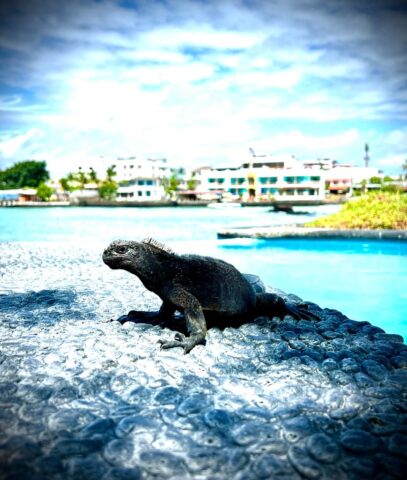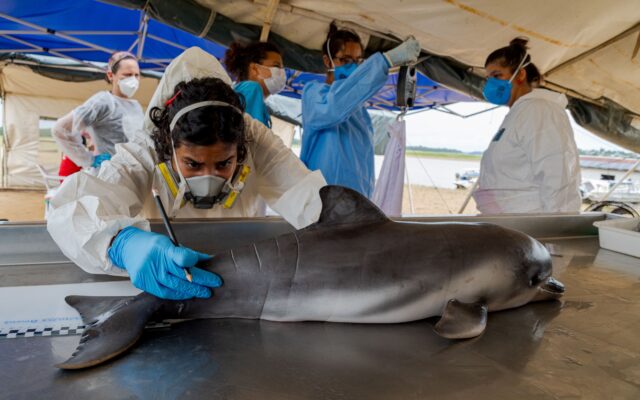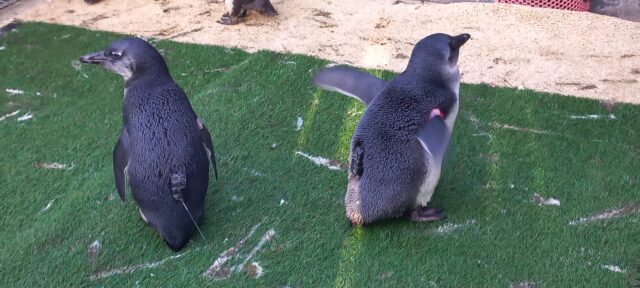The SeaWorld Conservation Fund has announced cornerstone investments in the preservation of manatees and Guadalupe fur seals, committing up to $1.075 million over up to four years. The initial investments encompass three organisations and will help support vital census work and tagging for imperiled Gudalupe fur seals, along with habitat restoration, rescue, rehabilitation, release, monitoring and education for manatees globally. It will also help make possible the building of the first African manatee rehabilitation centre in Cameroon. The investments are part of a new investment strategy to drive greater impact among species of concern. Over the next several years, the Fund will work closely with these organisations as they make a positive impact on our planet's endangered species. In addition to support through the Fund, SeaWorld parks help manatee and Guadalupe Fur Seal conservation with rescue, rehabilitation, and return.
“We believe that by focusing our efforts on specific species and investing in targeted areas of conservation, we can make a greater impact and help protect these animals for generations to come,” said Dr. Chris Dold, President of the SeaWorld Conservation Fund and Chief Zoological Officer of SeaWorld. “Preserving species requires a collective effort and we are so proud to provide financial support to a number of unique organisations focused on animal rescue and rehabilitation, conservation education, habitat preservation and research worldwide.”
The Fund will continue to make other large grants to these species, issue emergency grants as needed, and offer small grant support for select conservation programs. The public can get involved in supporting future wildlife conservation efforts by donating to the SeaWorld Conservation Fund in the parks.
Protecting Manatee Populations Around the World, everywhere they Reside
The first cornerstone investment is for the preservation of manatees worldwide - across the Eastern Atlantic, Caribbean, and Amazon. Currently, the species is classified as “Vulnerable” by the IUCN and is protected by law in all countries of its distribution. Initial recipients include:
The African Marine Mammal Conservation Organization (AMMCO) will receive up to $450,000 over three years to support work in manatee habitat restoration in the Lake Ossa Wildlife Reserve, an African manatee sanctuary in Cameroon. This includes advancing the team’s development of a first-of-its-kind biological solution to safely reduce salvinia, a fast-growing invasive aquatic plant that covers the surface area of lakes and streams, degrading water quality and preventing the growth of vegetation consumed by manatees. With help from the Conservation Fund, AMMCO expects to reduce salvinia by 40% in Lake Ossa in the first year. The solution shows promise for application in other regions around the world. Funding will also be used to plan the region’s first African manatee rehabilitation centre.
Aristide Takoukam Kamla, Founder and President of African Marine Mammal Conservation Foundation and a National Geographic Explorer, said “The manatee population in our area has decreased with sighting probability down from 50% to zero, along with a decrease in fish production that is significantly impacting the livelihoods of our local fishing community. The SeaWorld Conservation Fund grant will be instrumental in our work to restore the lake and the bounty it provides, from abundant fish to local manatee populations. It will also help us to erect a much needed and first-of-its-kind manatee rescue and education centre for our region.”
The Friends of the Manatee Association (AMPA) will receive up to $225,000 over three years to support manatee conservation in the Amazon basin. The funding will enable AMPA to increase the number of manatees rescued, rehabilitated, released, and monitored in Brazil. It will also support environmental education activities involving teachers, children, and their parents, teaching them about manatees, their role in the environment, and the importance of their conservation. This critical community education aspect prepares the inhabitants of the region for the arrival of manatees in the released area and promotes their continued inclusion in local conservation efforts and interest in preservation of their ecosystem long-term. The AMPA is one of the main partners of the National Institute of Amazonian Research – INPA, an authority of the Ministry of Science Technology, Innovation and Communications – MCTIC, in the protection of the aquatic mammals of the Amazon.
Understanding Why Guadalupe Fur Seal Populations are Slow to Recover and How to Help
The other cornerstone investment focuses on grants and research for species recovery of the Guadalupe fur seal, which is protected under the Endangered Species Act, classified as “threatened” in the U.S. and “endangered” in Mexico. It is the only pinniped species along the U.S. west coast listed under the Act.
A grant of up to $400,000 over four years has been made to a group of scientists led by Tenaya Norris of The Marine Mammal Center, and Dr. Fernando Elorriaga-Verplancken of Centro Interdisciplinario de Ciencias Marinas, Instituto Politecnico Nacional, to solve the information gap and allow experts to better preserve the species at breeding sites off Baja Mexico and throughout its range. This funding will support additional annual census and data gathering efforts necessary to understand population trends, environmental challenges, and other threats to the Guadalupe fur seal. Additionally, satellite tagging devices will track the movements of the seals, providing valuable insight into their behaviour and the factors impacting their survival to ensure long-term conservation. The Guadalupe fur seal was hunted to what was believed to be extinction until it was rediscovered on Guadalupe Island in 1954. Today the population is estimated at ~64,000.
Tenaya Norris, Adjunct Scientist at The Marine Mammal Center said, “The Guadalupe fur seal population is recovering, but not as quickly as other pinniped species. With help from the SeaWorld Conservation Fund, we can get closer to understanding why and how they are impacted by various natural and human-related threats. That is the key to helping this species return to a state of abundance. We are immensely grateful for this generous contribution.”
SeaWorld Parks are on the frontline of manatee and Guadalupe fur seal conservation
SeaWorld is on the front line of wildlife conservation helping sick, injured, stranded, and orphaned animals through rescue, rehabilitation, and return. SeaWorld’s five-acre Rescue Center in Orlando is one of the largest spaces available and serves as one of only five critical care facilities in the U.S. for the treatment and care of rescued animals, including manatees. It can care for up to 60 manatees at a time, giving it the largest capacity in the state of Florida and in the U.S. SeaWorld has helped more than 1,300 manatees in need to date.
SeaWorld San Diego is one of only two facilities in the United States authorised to rehabilitate Guadalupe fur seals. SeaWorld has rescued 36 Guadalupe fur seals in the last five years alone. For rescued and rehabilitated animals that wildlife authorities determine cannot survive on their own, including manatees and Guadalupe fur seals, SeaWorld provides long term care. SeaWorld San Diego is one of only a few places where the public can see Guadalupe fur seals in a zoological setting.
Back to news

